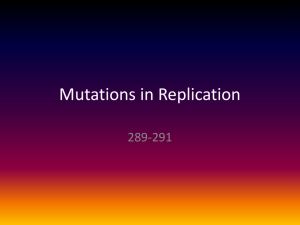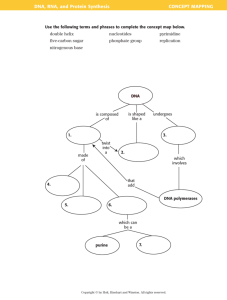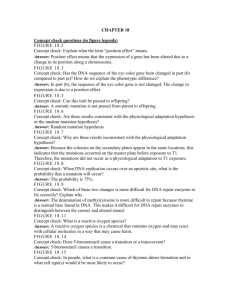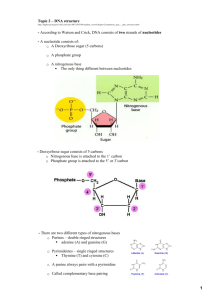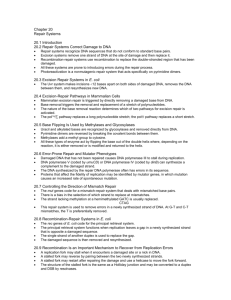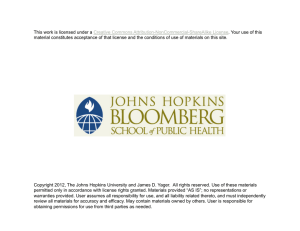UV Damage – How does it happen
advertisement
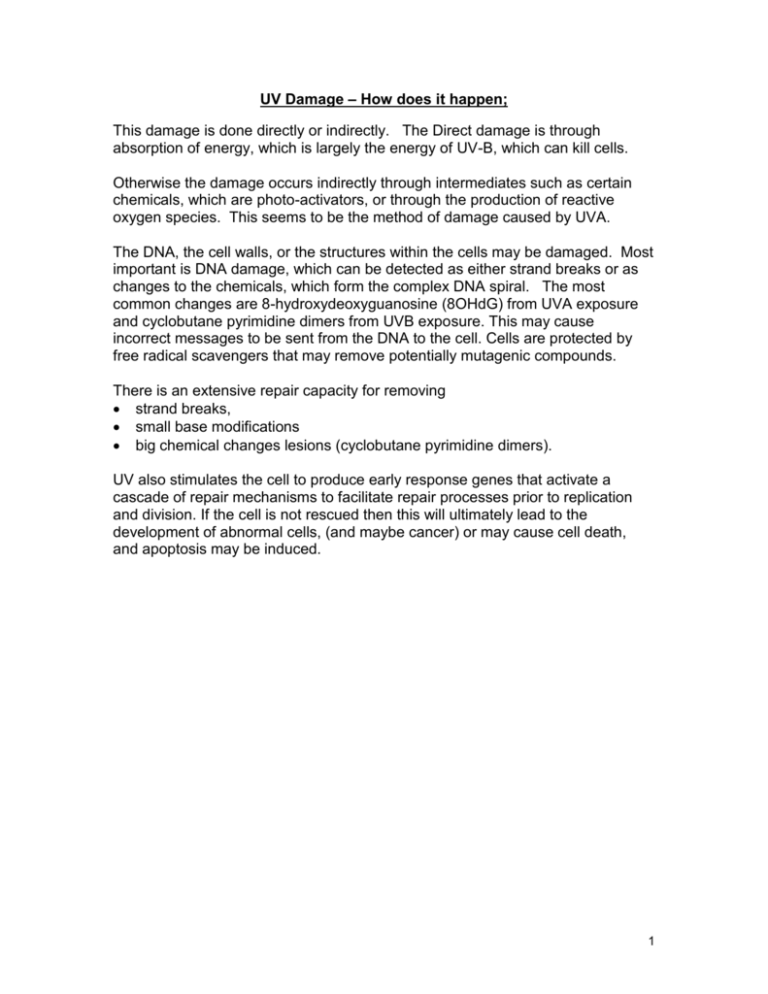
UV Damage – How does it happen; This damage is done directly or indirectly. The Direct damage is through absorption of energy, which is largely the energy of UV-B, which can kill cells. Otherwise the damage occurs indirectly through intermediates such as certain chemicals, which are photo-activators, or through the production of reactive oxygen species. This seems to be the method of damage caused by UVA. The DNA, the cell walls, or the structures within the cells may be damaged. Most important is DNA damage, which can be detected as either strand breaks or as changes to the chemicals, which form the complex DNA spiral. The most common changes are 8-hydroxydeoxyguanosine (8OHdG) from UVA exposure and cyclobutane pyrimidine dimers from UVB exposure. This may cause incorrect messages to be sent from the DNA to the cell. Cells are protected by free radical scavengers that may remove potentially mutagenic compounds. There is an extensive repair capacity for removing strand breaks, small base modifications big chemical changes lesions (cyclobutane pyrimidine dimers). UV also stimulates the cell to produce early response genes that activate a cascade of repair mechanisms to facilitate repair processes prior to replication and division. If the cell is not rescued then this will ultimately lead to the development of abnormal cells, (and maybe cancer) or may cause cell death, and apoptosis may be induced. 1

